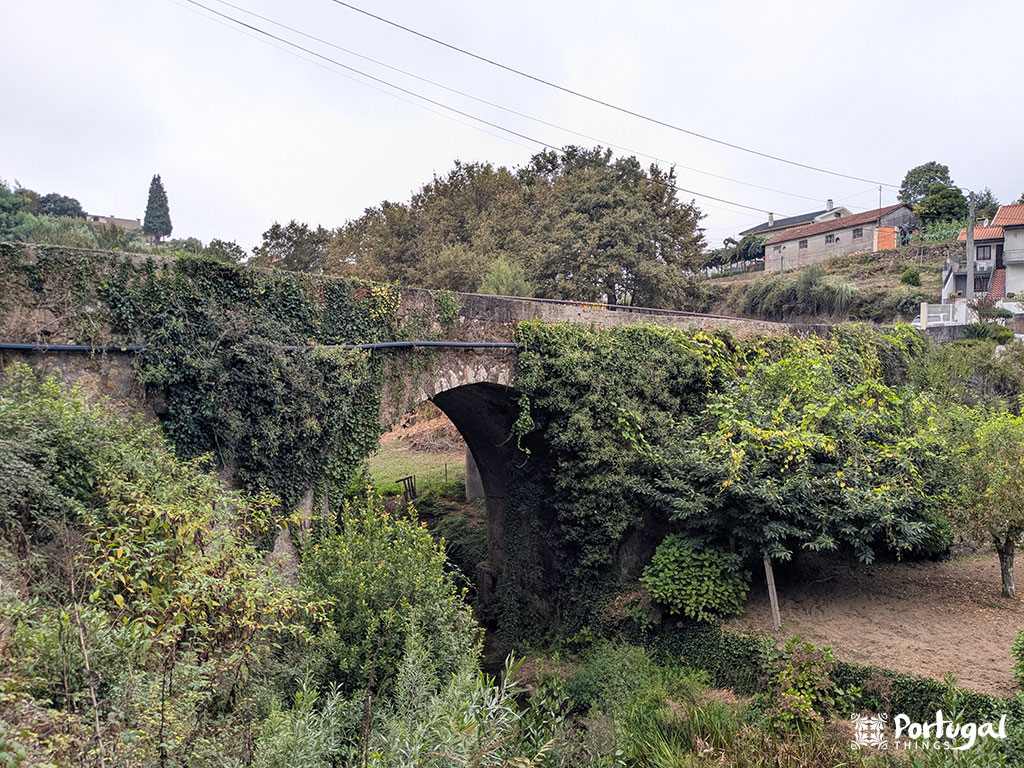The Pindelo walkways in Oliveira de Azeméis were a wonderful surprise, offering a route filled with water, shade, and even waterfalls! Not the entire trail is on boardwalks, but it’s worth it for anyone who enjoys this type of walk.
These boardwalks are officially two trails, PR7 OAZ and PR8 OAZ. Both start at the same point, but head in opposite directions. Below, we’ll explain each in detail and whether it’s worth doing both.
Although they’re still relatively unknown, we believe they’ll quickly become popular, as this is the kind of trail that’s truly worth experiencing, so much so that we’re adding them to our list of favorite walkways in Portugal.
The trails include some stairs and steep sections, but they’re not particularly difficult, and anyone can do them.
Pindelo Walkways – General Information
- Name: Pindelo Walkways (sometimes also called Outeiro Walkways or the Outeiro Waterfall Walkways)
- Start: Next to the Pinhão Bridge over the Antuã River in Pindelo, 40°52’06.4″N 8°26’26.3″W
- Distance: 6 km in total — 4.4 km for the Pedra Má Route (PR8) and 1.6 km for the Ponte Samuel Route (PR7)
- Time needed: about 2½ to 3 hours for both routes
- Difficulty: easy to moderate
- Max/Min altitude: meters
- Altitude gain: meters
- Type: round trip (both routes)
- Signage (1–5): 5 — only in a few spots are markings less visible
- Highlights: several mills, Levada das Poias, Outeiro Waterfall, Pedra Má
- You can download the official brochure [here].
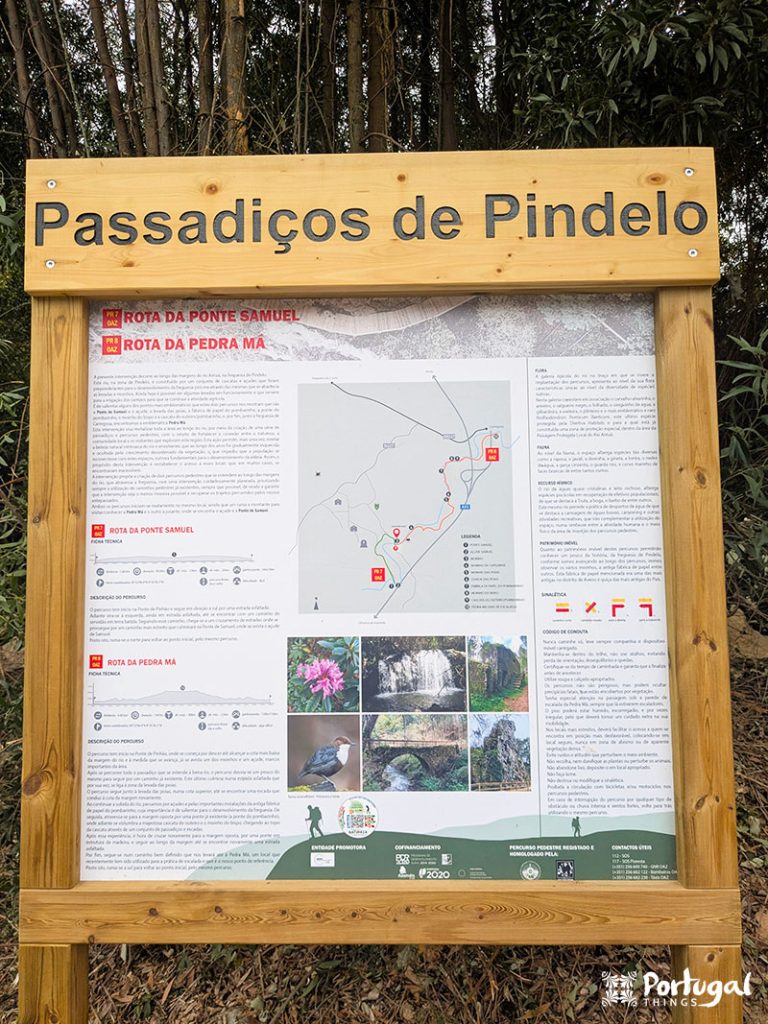
Pedra Má Route and Ponte Samuel Route
The Pindelo Walkways consist of two Short Routes (Pequena Rota):
- PR7 – Ponte Samuel Route: 800 meters (1.6 km round trip), taking about half an hour.
- PR8 – Pedra Má Route: 2.2 km (4.4 km round trip), taking less than 2 hours.
Both routes start at the same point, the Pinhão Bridge. PR7 follows along the road and then downstream along the Antuã River toward Ponte Samuel, while PR8 heads upstream toward Pedra Má.
It’s worth noting that PR8 is far more interesting and scenic than PR7, and that walkways only exist along PR8. Therefore, the Ponte Samuel Route should be viewed as an additional option for those who have the time and wish to visit the historic Samuel Bridge.
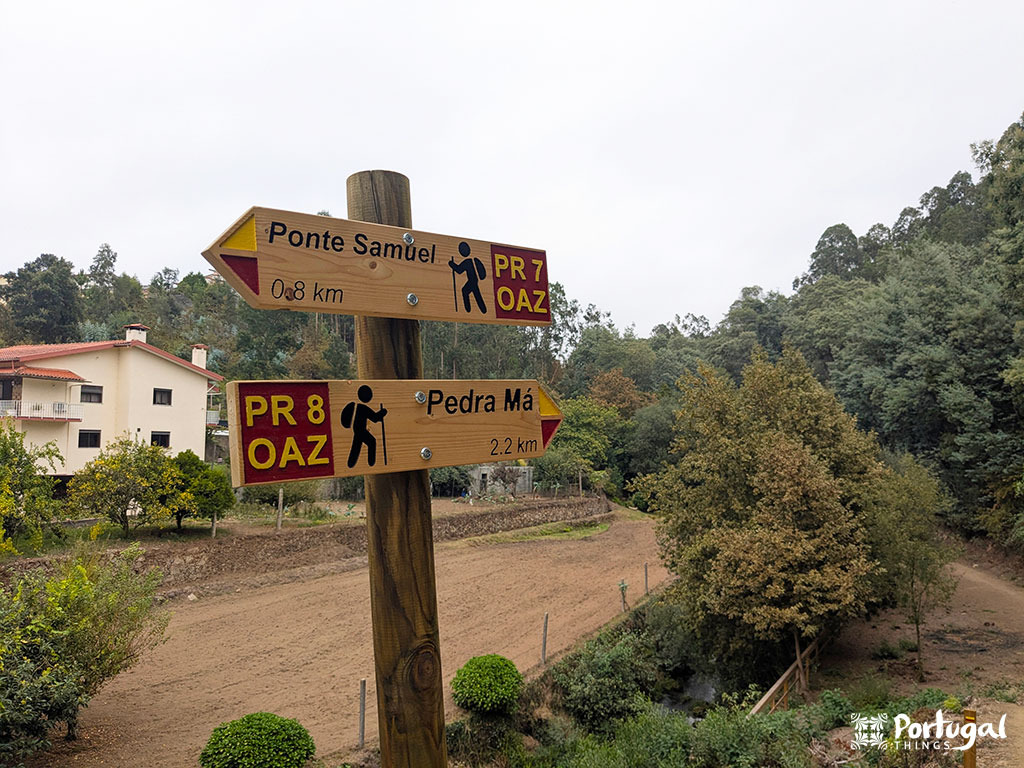
Our Experience at the Pindelo Walkways
The start of both Pindelo Walkway routes is marked by an information panel with details about the trails and their highlights. There is some parking available, but there are limited spaces. Below, we’ll explain both routes.
PR8 – Pedra Má Route
The Pedra Má Route in Oliveira de Azeméis is the longer and more interesting of the two, which is why we recommend doing it first. It begins with a descent along a dirt path to the bank of the Antuã River, from where you follow the riverbank toward the first walkways and the viewpoint.
The first walkway section lasts a few hundred meters and runs parallel to the river the whole way. This route alternates between well-maintained forest paths that are easy to follow and sections of walkways.

After a few hundred meters of walkways along the river at the start, the path continues along existing trails with steep climbs and descents — fortunately, they are also relatively short — until eventually reaching the riverbank again.
Once back at the Antuã River, you’ll find the source of the Levada das Poias along with several small dams and artificial waterfalls. The path continues uphill along the riverbank, leading to the beautiful Outeiro Waterfall. We hadn’t known about this waterfall, and it turned out to be much larger and more attractive than we expected.

At the top of the waterfall, we cross the river on a wooden bridge and continue along forest trails, passing under the highway. The height of the viaducts is impressive.
Continuing along the forest paths, we reach our destination: Pedra Má, a large rock that has been used for climbing. There is also a smaller waterfall there and a tiny bridge where you can cross to the other side to see another levada.
After exploring the final destination, you return the same way you came, following the exact same route back to the start.

PR7 – Ponte Samuel Route
The Ponte Samuel Route is much shorter and simpler than the previous one. It starts at the same location, but instead of descending to the riverbank, you cross the Pinhão Bridge and continue along the road for several dozen meters.
At the first opportunity, turn left onto an asphalt road and keep going straight. Eventually, you’ll see another left turn — this time onto a dirt forest path. It’s worth noting that the first left turn is not marked, but the turn to the dirt path is, and from there the route is well signposted.
On the dirt path, continue straight for several hundred meters until you reach a right turn downward. Turn right there and follow the path downhill until you reach the Samuel Bridge and dam.
These are the only points of interest on the trail. The bridge is beautiful and appears to be very old, although we couldn’t find any information about its age or origin. From the Samuel Bridge, you return the same way to the starting point.
This is not a particularly captivating or scenic route, but it is easy to follow and leads to a curious and interesting destination. If you have the energy and curiosity, it’s worth doing; however, if your main goal is to see the walkways and waterfalls, it may be better to take the Pedra Má Route.
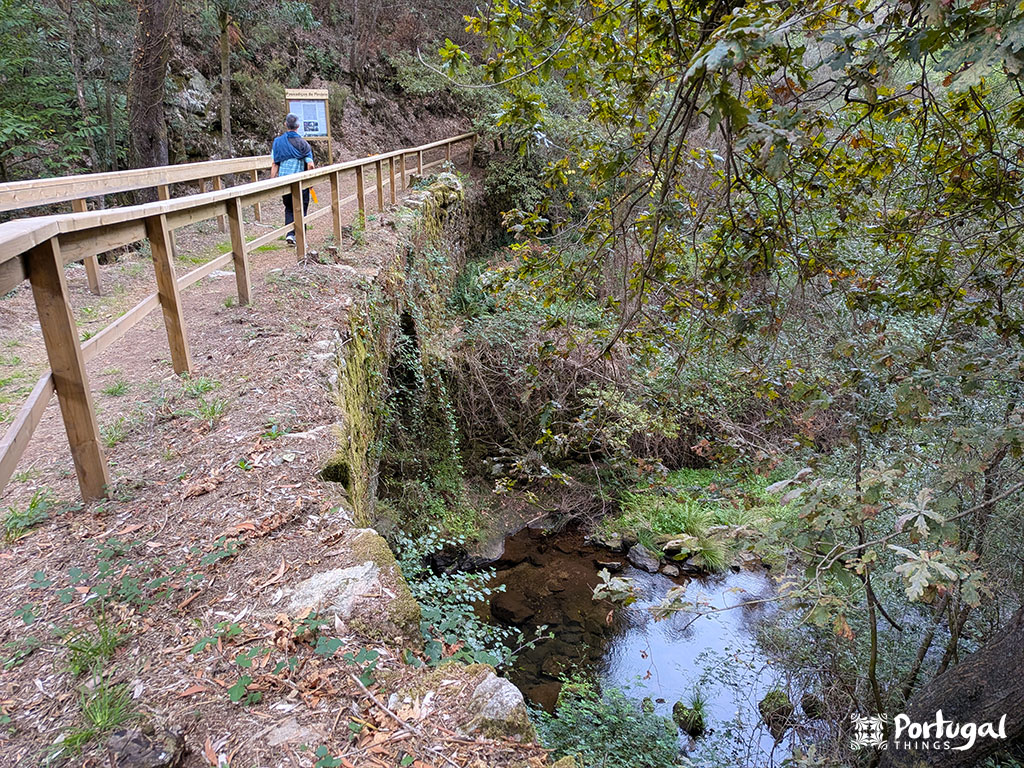
Best Time of Year to Do the Pindelo Walkways
This route can be done relatively easily throughout the year. Just keep in mind that if it has rained, there will be areas with a lot of mud, and some stone sections can become extremely slippery.
On the other hand, in winter, the Antuã River carries significantly more water, making the entire landscape — especially the waterfalls — even more impressive.
If you choose to do the route in summer, know that much of it is shaded, making it an excellent trail for hot, sunny days.

Who Can Do the Pindelo Walkways?
The Pindelo Walkways route is neither physically nor technically challenging. Anyone used to hiking can complete the trail without difficulty. We’ve done it with people over 60 years old without any problems.
However, despite having sections of walkways, it is not suitable for people with limited mobility or agility due to the presence of stairs and short sections with very steep inclines.
What to Bring to the Pindelo Walkways
The route is very accessible and relatively short, so you don’t need to bring anything special. However, there are no cafés or restaurants at the start or along the way. Therefore, we recommend bringing everything you might need, including:
- Water (about 1L per person)
- Snacks
- Comfortable walking shoes
- Comfortable clothing
- A rain jacket in winter
- Swimwear, sunglasses, a hat, and sunscreen in summer
- Camera and phone, as there are many opportunities for great photos. A phone is also useful for GPS.
- A small backpack to carry everything
As always, please leave no trash behind. Take everything you bring with you.
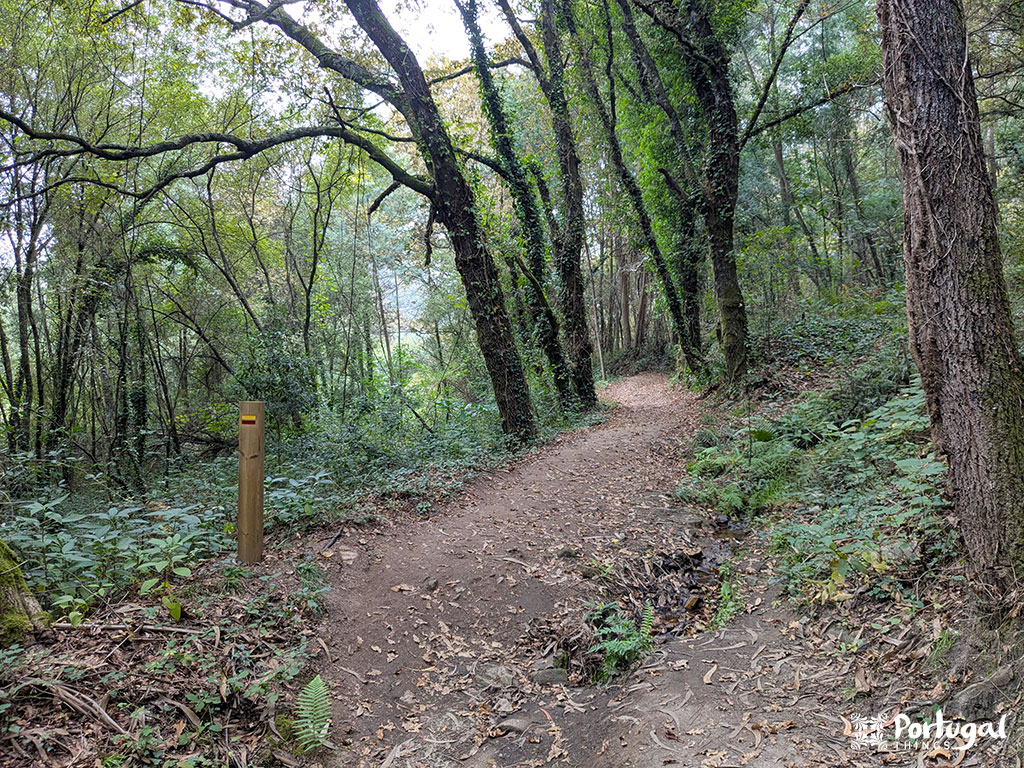
How to Get to the Pindelo Walkways
The trail starts next to the Pinhão Bridge over the Antuã River. There aren’t many parking spaces, but when we went, there were enough.
Getting to the start of the trail isn’t very complicated. In fact, the trail is just a few kilometers from the N1 road, so access is relatively easy. If you’re coming from Porto, you can also take the A32 highway and exit at exit 2 for the N227. From Porto via the highway, it’s only about a 40-minute drive.
📍Google Maps location: Click here.
Where to Stay When Visiting the Pindelo Walkways
This is a half-day trail, so you only need to stay nearby if you want to. It’s perfectly possible to go and return from Porto, Aveiro, or even Coimbra.
